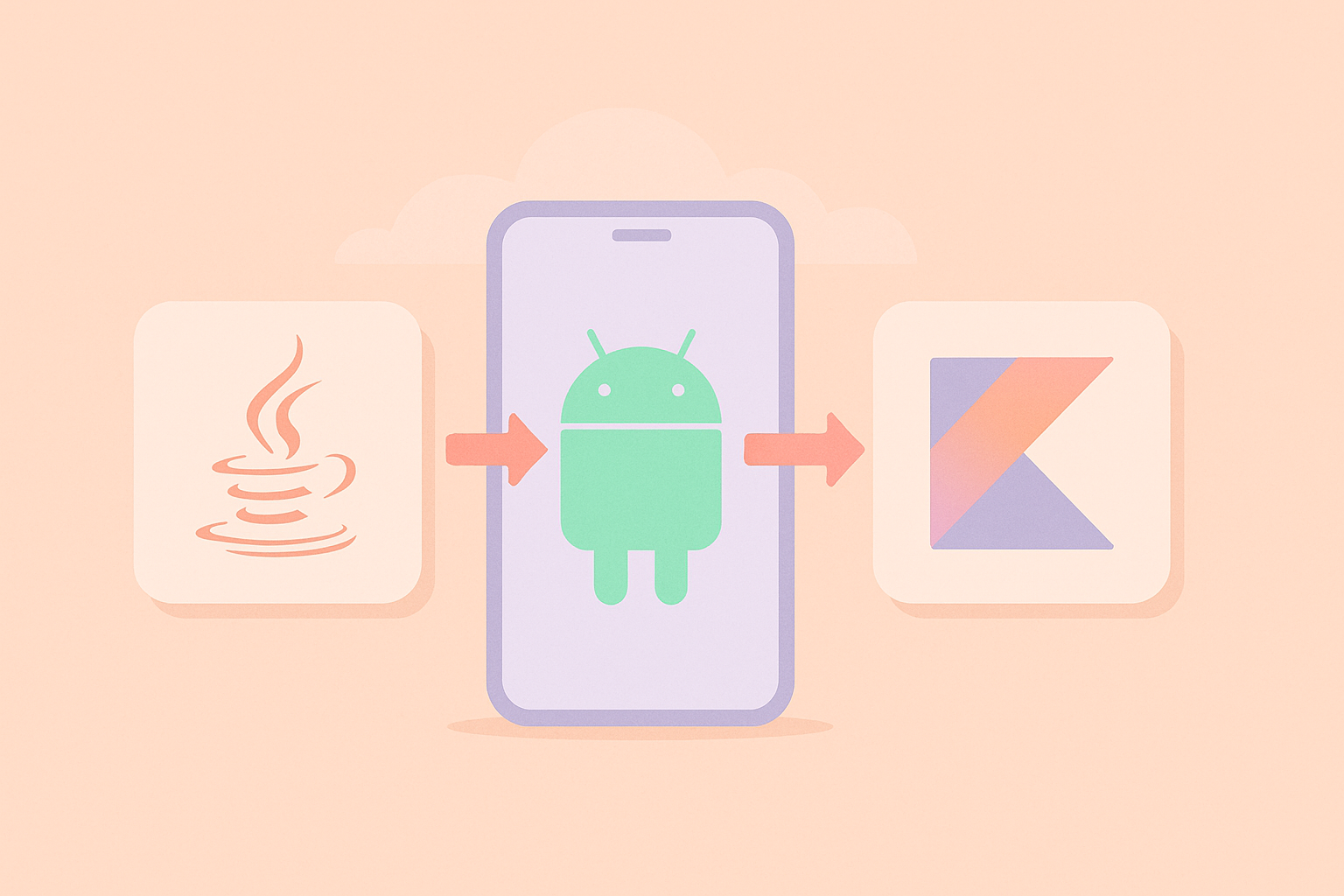For years, Java has been the cornerstone of Android development, serving as the go-to programming language for countless developers worldwide. However, with the introduction of Kotlin, the Android ecosystem has undergone a major transformation. Kotlin has rapidly gained popularity due to its concise syntax, modern features, and strong support from Google. This shift from Java to Kotlin represents more than just a language change—it’s a paradigm shift in how developers build, maintain, and optimize Android apps.

1. Why Kotlin Became the Preferred Choice
In 2017, Google officially announced Kotlin as an official Android development language. This marked a turning point in Android app development. Unlike Java, Kotlin is designed with productivity and safety in mind. It eliminates many common programming errors, such as null pointer exceptions, and offers developers a cleaner, more efficient way to write code.
Some of the key advantages of Kotlin include:
- Conciseness: Kotlin significantly reduces boilerplate code compared to Java, allowing developers to write more functionality with fewer lines.
- Null Safety: Kotlin’s type system helps eliminate null-related errors, one of the most common sources of bugs in Java.
- Coroutines: Built-in support for asynchronous programming through coroutines makes Kotlin a powerful tool for handling background tasks and concurrency.
- Interoperability: Kotlin can coexist seamlessly with Java, allowing developers to migrate existing projects gradually without a complete rewrite.
- Smart Casts and Type Inference: The compiler automatically handles many type conversions, simplifying development and improving readability.
2. Comparing Java and Kotlin: A Developer’s Perspective
For Android developers transitioning from Java, understanding the differences between the two languages is essential. While Java remains a robust and mature language, Kotlin offers syntactic sugar and modern capabilities that make development faster and more enjoyable.
| Feature | Java | Kotlin |
|---|---|---|
| Null Safety | Prone to NullPointerException | Built-in null safety |
| Boilerplate Code | Requires getters/setters, equals, etc. | Data classes automatically generate them |
| Coroutines | Not supported natively | Native coroutine support for async operations |
| Extension Functions | Not available | Available and highly useful |
| Interoperability | Fully compatible with Kotlin | Fully compatible with Java |
3. The Migration Process: How Developers Transition from Java to Kotlin
Many Android developers are making the shift from Java to Kotlin gradually. The interoperability between the two languages makes the transition smoother. In Android Studio, developers can even convert Java files to Kotlin automatically using the “Convert Java File to Kotlin File” feature.
The best migration strategy typically includes:
- Starting with new modules or features written in Kotlin.
- Gradually refactoring old Java codebases when necessary.
- Using Kotlin’s interoperability to maintain compatibility with existing Java libraries.
For developers managing large-scale applications, adopting Kotlin doesn’t mean rewriting everything from scratch. Instead, it’s a step-by-step evolution that improves productivity and reduces technical debt over time.
4. Performance and Build Efficiency
Performance-wise, Kotlin compiles to the same bytecode as Java, meaning there’s no significant runtime performance difference. However, developers experience faster build times in some scenarios, particularly when using Gradle with optimized configurations.
Kotlin’s coroutines and inline functions also provide a performance advantage in asynchronous and functional programming tasks. With reduced overhead and better readability, apps built in Kotlin often exhibit more stable and maintainable performance profiles.
5. Community and Ecosystem Growth
The Kotlin community has grown rapidly, supported by JetBrains and Google. Kotlin Multiplatform now enables developers to share code across Android, iOS, and even web or backend systems. This cross-platform flexibility makes Kotlin a long-term investment for developers who want to future-proof their skills.
According to Stack Overflow’s annual developer survey, Kotlin ranks among the most loved programming languages—a testament to its intuitive design and growing adoption rate in both startups and enterprises.
6. Future of Android Development with Kotlin
Google’s focus on Kotlin-first development means that new Android features, libraries, and APIs are increasingly optimized for Kotlin. For example, Jetpack Compose—a modern toolkit for building native UI—is written primarily in Kotlin, offering developers a declarative and reactive way to build Android apps.
As Android evolves, Kotlin’s role continues to expand beyond mobile development. With Kotlin Multiplatform Mobile (KMM), developers can now share business logic between Android and iOS, reducing development time and costs while maintaining native performance.
7. Should You Learn Kotlin if You Know Java?
Absolutely. If you’re already familiar with Java, learning Kotlin is a natural next step. Its syntax is intuitive, and most Java concepts translate directly into Kotlin equivalents. Developers transitioning from Java to Kotlin often find themselves writing cleaner, more efficient code within weeks of practice.
Here are some tips to get started:
- Take official Kotlin courses from JetBrains Academy or Android Developers.
- Use Kotlin in small projects or personal apps before implementing it in large-scale systems.
- Join online communities such as Reddit’s r/Kotlin or Kotlin Slack channels.
8. Conclusion
The shift from Java to Kotlin marks a defining moment in Android development history. It’s a move towards modernity, efficiency, and developer satisfaction. Kotlin empowers developers to create more reliable, maintainable, and high-performing Android applications while simplifying codebases and improving team productivity.
Whether you’re an experienced Java developer or a newcomer to Android, embracing Kotlin means embracing the future of Android programming. The sooner you start, the sooner you’ll experience the many benefits of this powerful, elegant, and forward-looking language.

